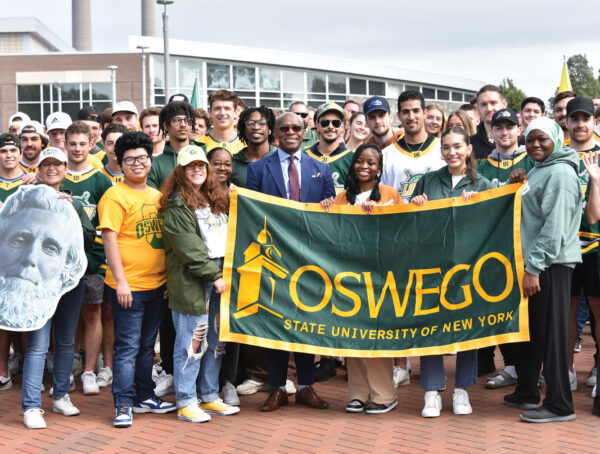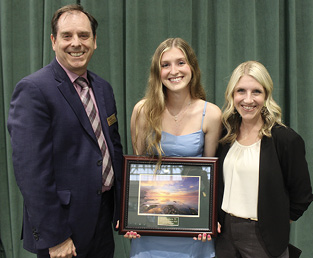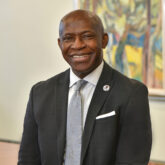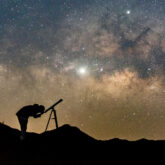 Last spring, SUNY Oswego received a $320,000 National Science Foundation grant to fly and drive into the heart of lake effect snowstorms to study their structure and improve forecasting. Field work began in December.
Last spring, SUNY Oswego received a $320,000 National Science Foundation grant to fly and drive into the heart of lake effect snowstorms to study their structure and improve forecasting. Field work began in December.
“We are getting awesome data from this storm!” said Associate Professor of Meteorology Scott Steiger ’99 after a mid-December snow storm that hit Oswego County and other parts of Central and Northern New York. He and a team of collaborators from three universities and the Center for Severe Weather Research collected lake effect data with the help of a King Air plane, a Mobile Integrated Profiling System and three Doppler-on-Wheels radar-equipped trucks.
The project—called OWLeS (Ontario Winter Lake-effect Systems)—consists of nearly $4 million in three companion NSF grants. One grant, for nearly $1 million, supports the involvement of scientists and equipment from the University of Wyoming, University of Alabama-Huntsville, University of Illinois at Urbana-Champaign and the Center for Severe Weather Research in Boulder, as well as SUNY Oswego.
The project involves Steiger, Professor Robert Ballentine, Oswego alumni Ted Letcher ’09, a graduate student at the University of Albany, and Jason Keeler ’07, a graduate student at Illinois-Urbana, as well as dozens of Oswego students.
Steiger’s team is studying long-fetch lake-effect storms, whose snow bands run parallel to the long axis of Lake Ontario and can turn into relentless snow machines. The first phase of their research, which included five research flights into the heart of the December storms, was highly successful, since the weather was unusually biased toward long-fetch events.
“An NSF grant two years ago gave us some insight into the detailed structures of the snow bands,” Steiger said. “There were a lot of instances of spinning air—we call them vortices—about a hundred meters wide. They could have been related to waterspouts; we really don’t know. We want to investigate how and why these areas of rotation form in the snow band. Rotation can influence where the band moves and how heavy the snow gets.”
Another goal, he said, is to see whether there are ways to better estimate snowfall rate based on radar data. Students on the ground will take measurements at preselected sites and integrate aircraft data for comparisons.
The third goal is to determine how and why lake-effect clouds sometimes become electrified and produce lightning.
“This is kind of the climax of my life in terms of my passion with weather, because I’m going to be able to get up close and personal with lake-effect snowstorms and understand how these things work,” Steiger said.
—Office of Public Affairs
You might also like
More from Campus Currents
University Celebrates Third Annual Founder’s Weekend
University Celebrates Third Annual Founder’s Weekend Several hundred members of the Laker community gathered together on campus to learn about the …
SAVAC Captain, Biology Major Named 2023 Outstanding Senior Award Winner
SAVAC Captain, Biology Major Named 2023 Outstanding Senior Award Winner Shannon Harris ’23, a biology major from Webster, N.Y., was selected …











